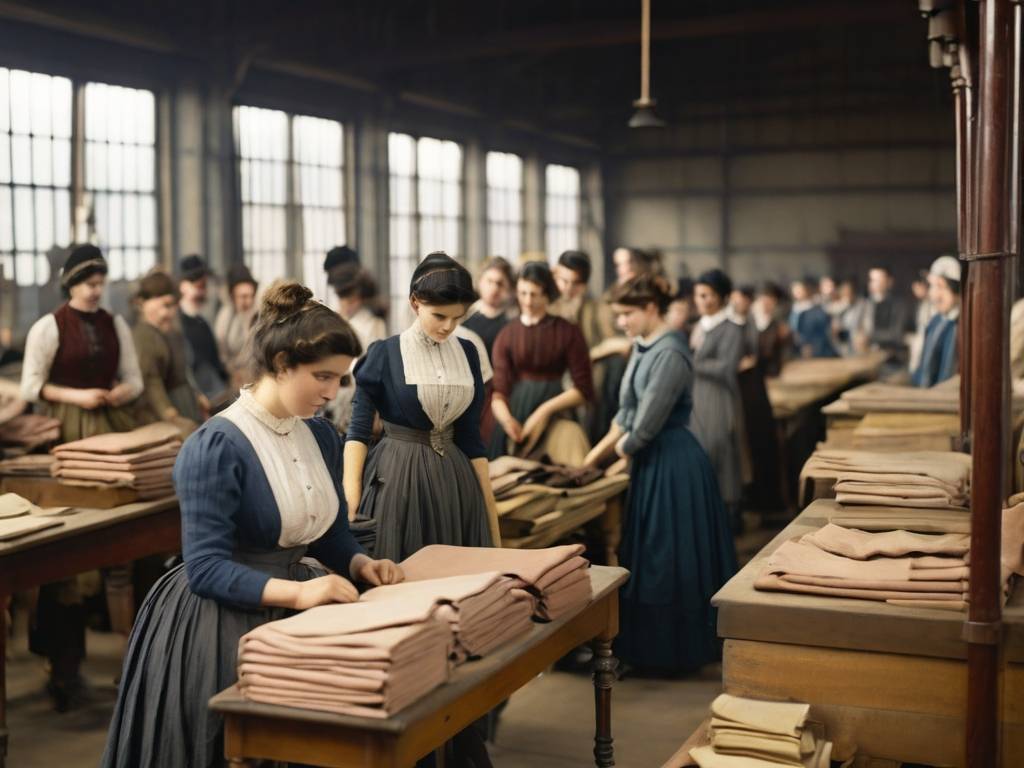Creating a stunning fashion design portfolio is a crucial step for any aspiring designer. It’s your chance to showcase your creativity, technical skills, and vision to potential employers, clients, or collaborators. In the fiercely competitive world of fashion, a well-crafted portfolio can set you apart and open doors to exciting opportunities. So, how do you build a fashion portfolio that stands out? Let’s break it down.
Understanding the Purpose of a Fashion Design Portfolio
At its core, a fashion design portfolio serves as a visual resume. It communicates your design aesthetic, technical abilities, and your potential as a designer without the need for words. Whether you’re applying for a job, seeking clients, or trying to secure a spot at a prestigious fashion school, your portfolio should leave a lasting impression.
But remember, it’s not just about the designs. Your portfolio should also demonstrate your problem-solving skills, creativity, and how you approach the design process. Every piece included should contribute to telling the story of who you are as a designer.
Types of Fashion Design Portfolios
There are two main types of portfolios you can choose from: physical and digital. Both have their benefits.
- Physical Portfolios: These are tangible, printed portfolios that you can hand over during interviews or meetings. They allow the viewer to touch and feel the material, which can be especially impactful if you have fabric samples or texture-heavy designs.
- Digital Portfolios: A digital portfolio is more accessible and versatile. It can be shared with anyone, anywhere, through websites, PDFs, or platforms like Behance or Dribbble. It also gives you the opportunity to integrate multimedia elements like videos, animations, or 3D renderings, adding another dimension to your work.


For most modern designers, a combination of both is often the best approach. A digital portfolio is great for broad outreach, while a physical one can provide a more personal touch during key meetings.
What to Include in Your Fashion Design Portfolio
Your portfolio should be a carefully curated selection of your best work. Quality over quantity is key. Here’s what you should include:
- Sketches and Concept Boards: Show the evolution of your ideas from rough sketches to polished concepts. This highlights your creative thought process.
- Finished Designs and Garments: Include high-quality images of your completed designs, whether they’re physical garments or digital renderings.
- Mood Boards and Design Inspirations: Mood boards can help convey your inspiration and the underlying themes of your collection.
- Photography and Lookbooks: Professional photographs of models wearing your designs, styled in various settings, add a polished and realistic touch.
- Technical Drawings and Patterns: Demonstrate your technical skills by including detailed flat sketches, pattern drafts, and CAD drawings. This shows potential employers that you understand the technical side of fashion, not just the creative aspect.

Tailoring Your Portfolio to Your Target Audience
Before building your portfolio, think about who will be viewing it. Are you targeting luxury fashion houses, mass-market retailers, or streetwear brands? Each audience will look for different qualities in your work.
For instance:
- If you’re applying to a haute couture house, emphasize intricate detailing, craftsmanship, and luxury fabrics.
- If you’re focusing on ready-to-wear fashion, showcase designs that balance creativity with wearability.
Building a Strong Personal Brand
Your portfolio is more than just a collection of designs. It’s a way to communicate your unique brand as a designer. Consistency in your style, color schemes, and overall theme is essential. Are you known for avant-garde designs, or are you focused on minimalist, sustainable fashion? Let your portfolio reflect that.
How to Present Your Fashion Portfolio Professionally
Presentation is everything. A clean and organized portfolio is crucial. Here are a few tips:
- Structure your portfolio in a way that tells a story, from your initial sketches to finished products.
- Use a simple, minimalist layout that lets your designs shine. Avoid clutter or overly complicated page designs.
- Make sure each page is balanced with a good mix of images, text, and white space.
Choosing the Best Format for Your Portfolio
Both print and digital portfolios have their merits, and your choice should reflect your goals.
- Print Portfolios: Choose high-quality paper and printing options. Make sure that the colors and textures come across well in print.
- Digital Portfolios: Use online platforms like Behance or create your own website. Ensure that your website is user-friendly, easy to navigate, and mobile-responsive.

How to Use Technology to Enhance Your Portfolio
Technology can elevate your portfolio in ways traditional methods can’t. Use social media platforms like Instagram to share your work with a broader audience. Consider creating videos that explain your process, show your designs in motion, or even feature 3D models of your garments.
Keeping Your Portfolio Updated
Your portfolio is a living document. As your career progresses and your skills improve, make sure to keep it updated with your latest and best work. Remove older pieces that no longer reflect your current style or expertise. Regularly refreshing your portfolio shows that you are an active, evolving designer.
Common Mistakes to Avoid in Your Fashion Design Portfolio
Too Many Designs: Don’t overload your portfolio with too much content. Choose quality over quantity.
Lack of Focus: Ensure your portfolio has a cohesive theme or direction.
Ignoring Technical Skills: Don’t forget to include technical drawings or pattern-making skills, as they’re essential for most fashion jobs.
Tips for Getting Feedback on Your Portfolio
Feedback is a valuable tool for improvement. Seek feedback from industry professionals, teachers, or experienced designers. Be open to constructive criticism, and use it to refine your work.
How to Stand Out in a Competitive Fashion Industry
Innovation and originality are your best friends in the fashion world. Showcase designs that push the envelope while still demonstrating practical skills. Employers want to see that you can innovate while remaining marketable.

Submitting Your Portfolio: Best Practices
When submitting your portfolio, always follow the guidelines provided by potential employers or schools. Tailor your submission to fit their specific requirements. For digital submissions, ensure that your files are easily accessible and optimized for quick viewing.
Conclusion
Building a winning fashion design portfolio is an ongoing process that requires creativity, technical expertise, and strategic presentation. By focusing on quality, staying true to your brand, and tailoring your work to your audience, you can create a portfolio that opens doors and elevates your career. Stay consistent, seek feedback, and always be ready to adapt.
FAQs
- What size should a fashion design portfolio be?
- There’s no strict rule, but digital portfolios should be easy to navigate, while physical portfolios should be compact but not cramped—typically 11×14 inches works well.
- How many projects should I include in my portfolio?
- Around 8-12 projects is a good number. Prioritize quality over quantity.
- Should I include unfinished projects in my portfolio?
- Only if they demonstrate a unique concept or design process. Make sure they still look polished.
- How can I make my portfolio stand out online?
- Use a clean, user-friendly design. Incorporate multimedia like videos or interactive elements, and promote it on social media.
- Do I need a physical portfolio if I already have a digital one?
- It depends on your audience. For certain in-person interviews or presentations, a physical portfolio can make a strong impression.
Get All The Support And Guidance You Need To Be A Success At Far out Fashion. This Book Is One Of The Most Valuable Resources In The World When It Comes To A Look at the Latest Craziest Fashion Fads. click here to get access



